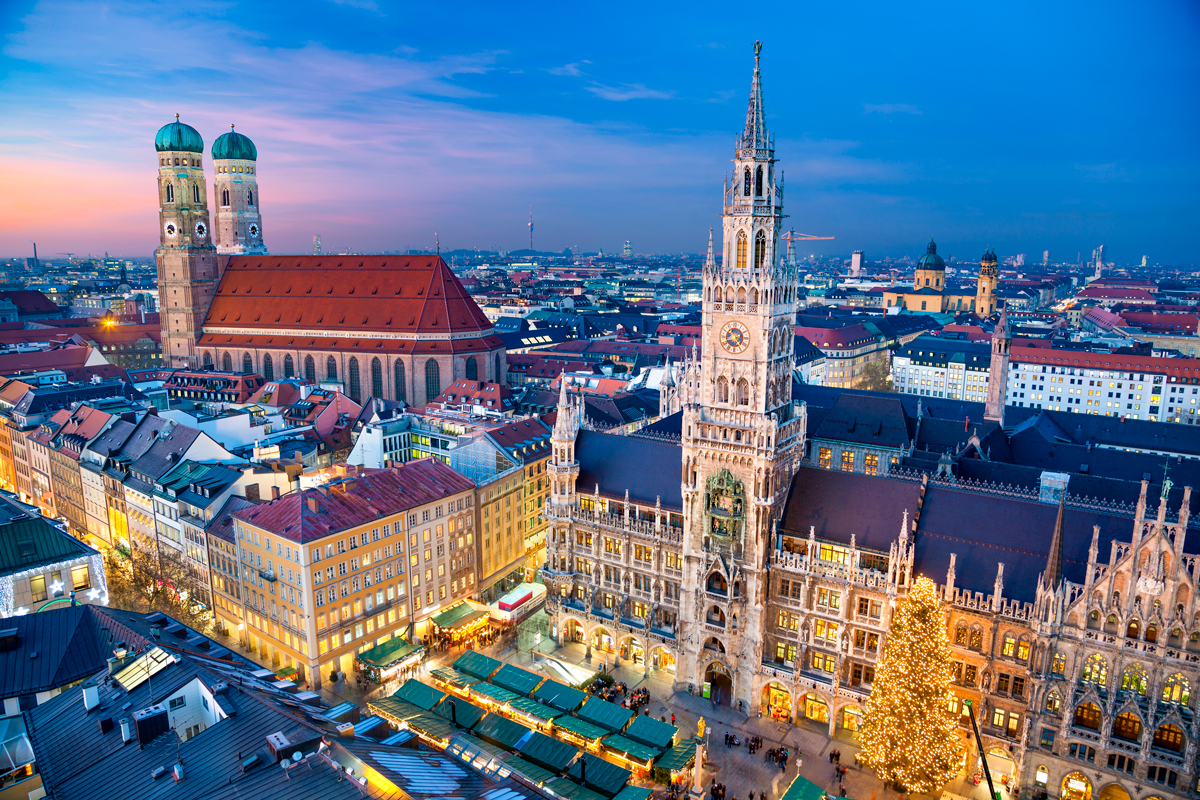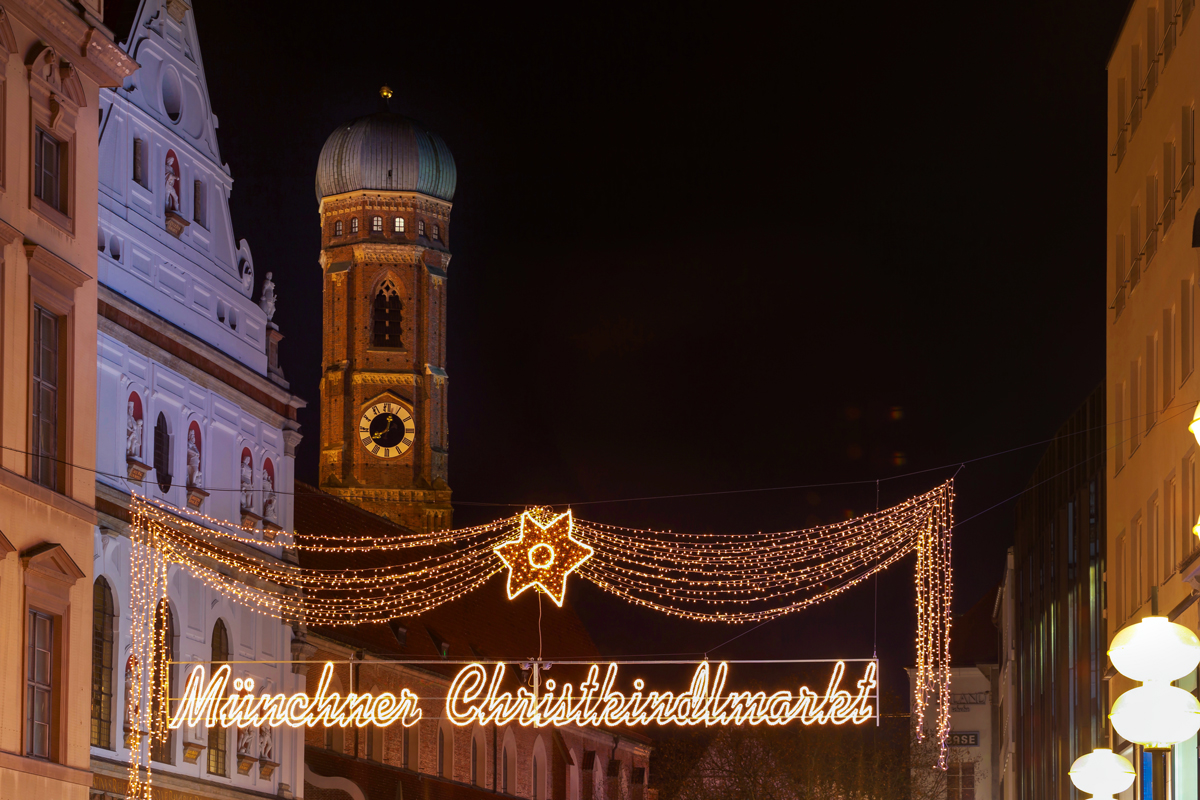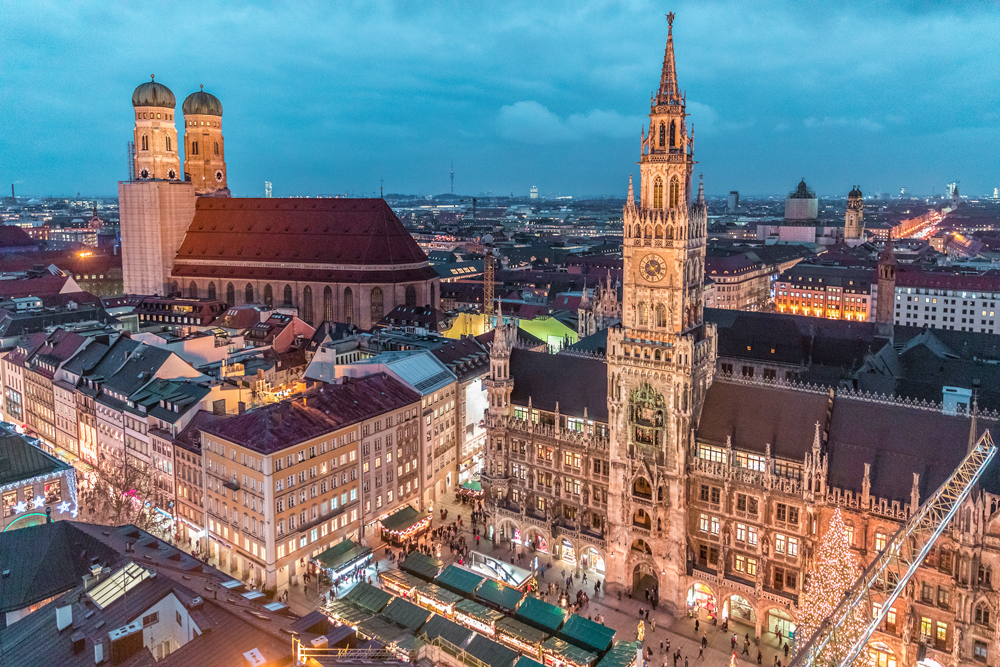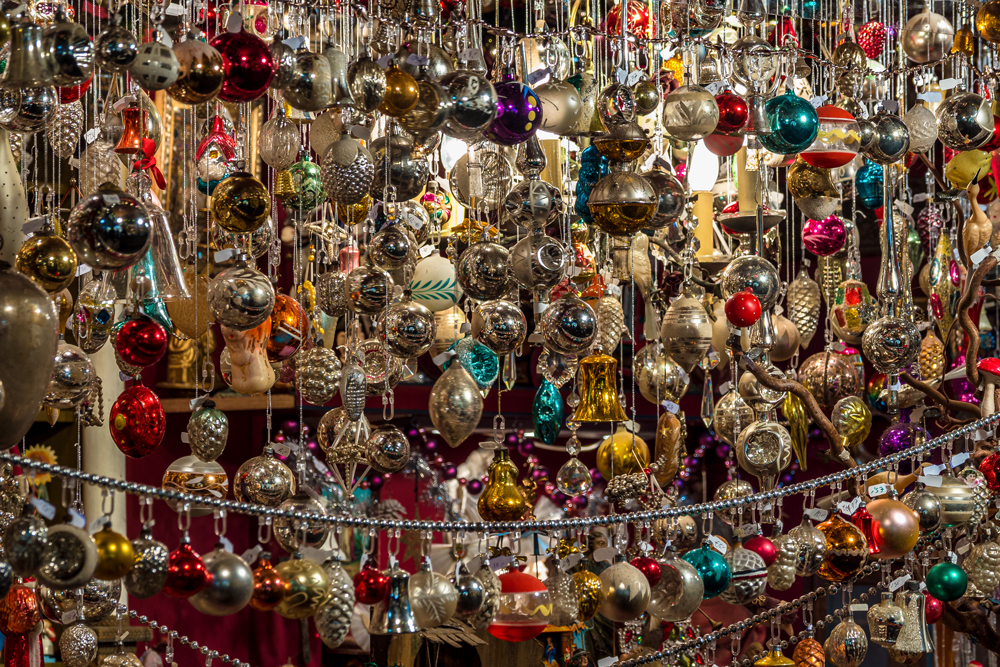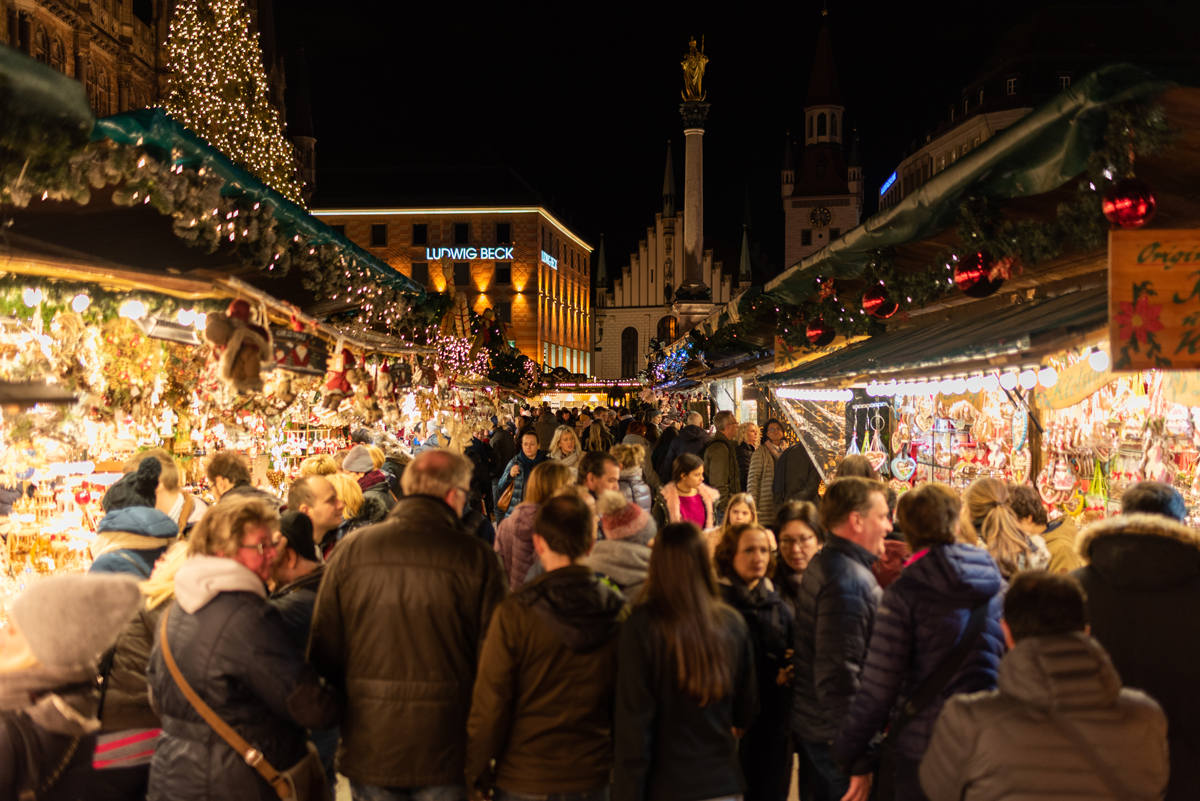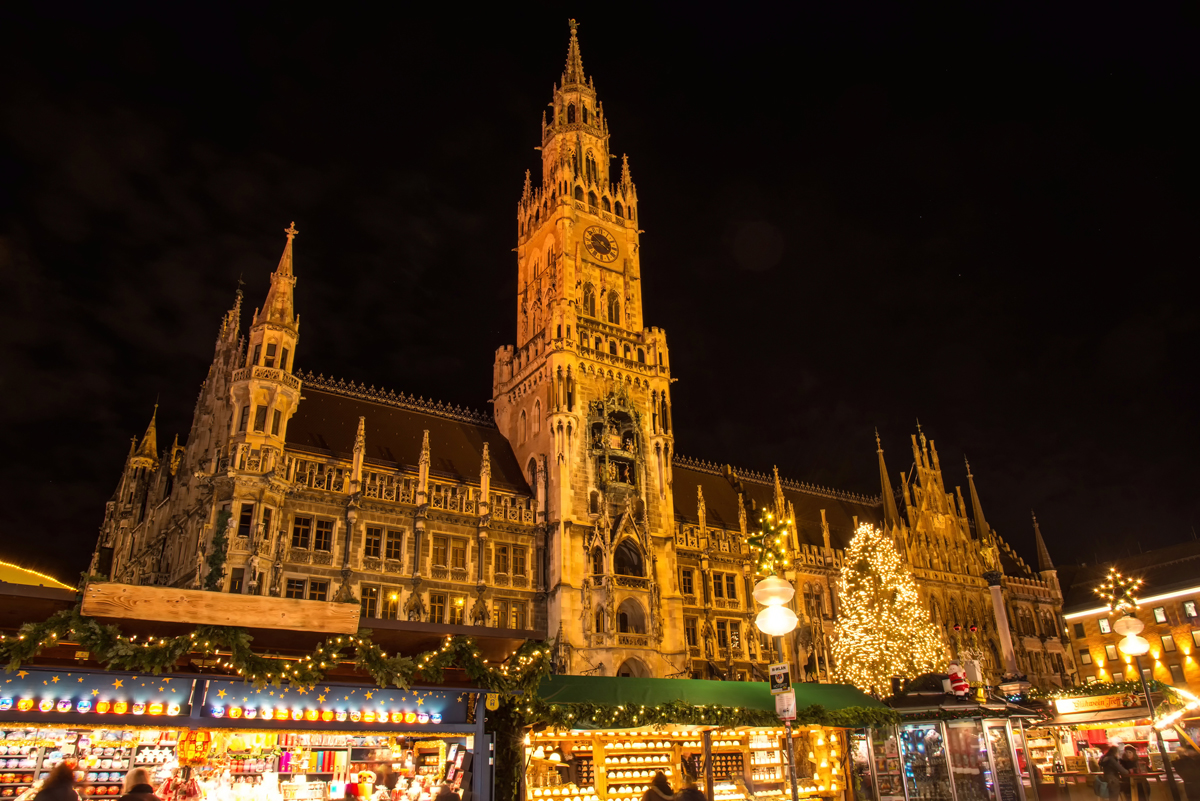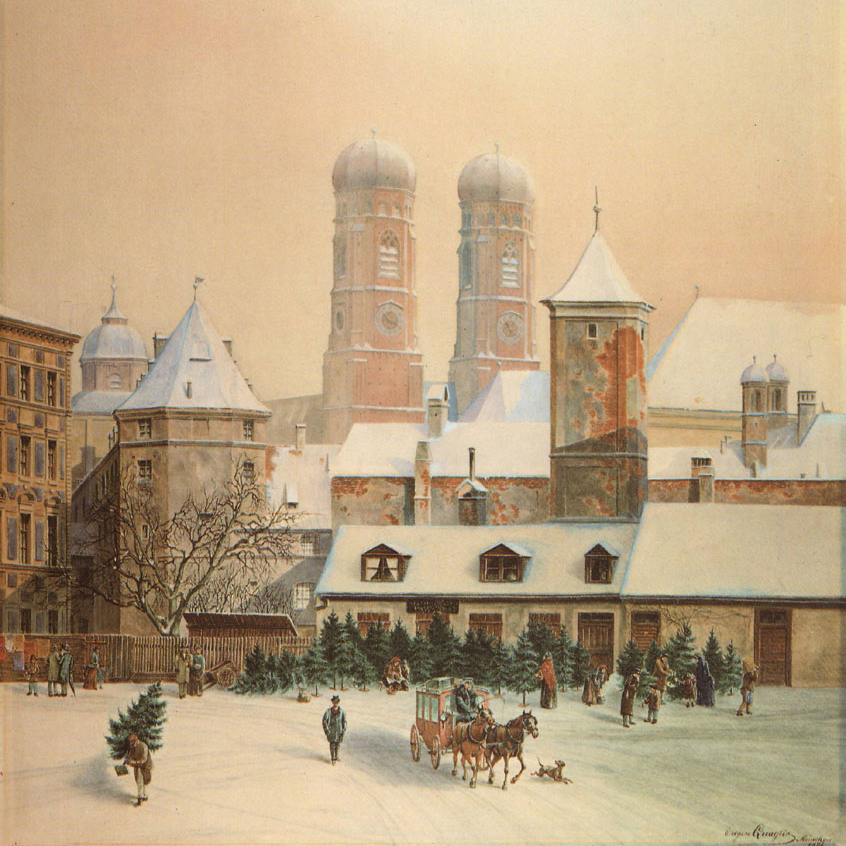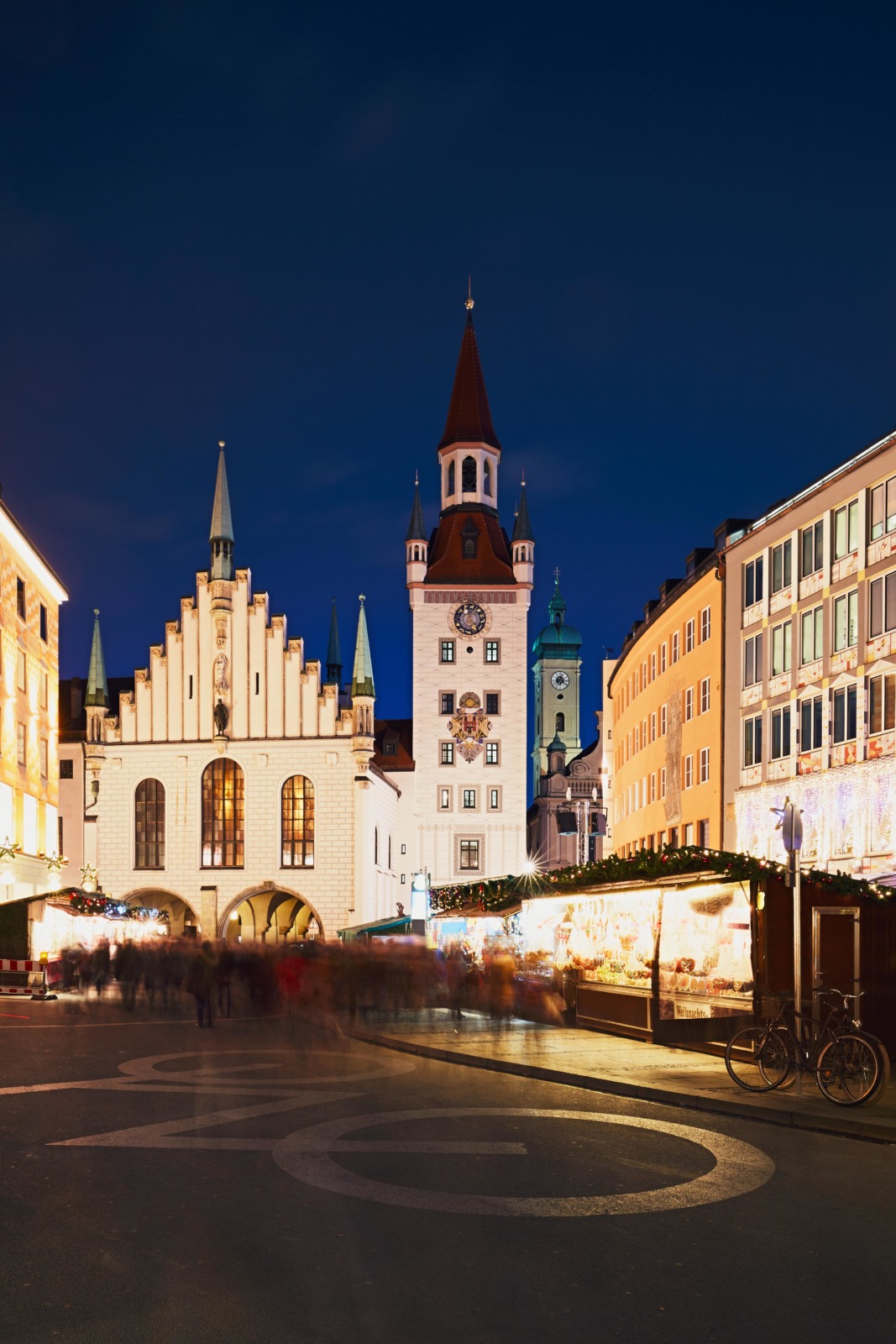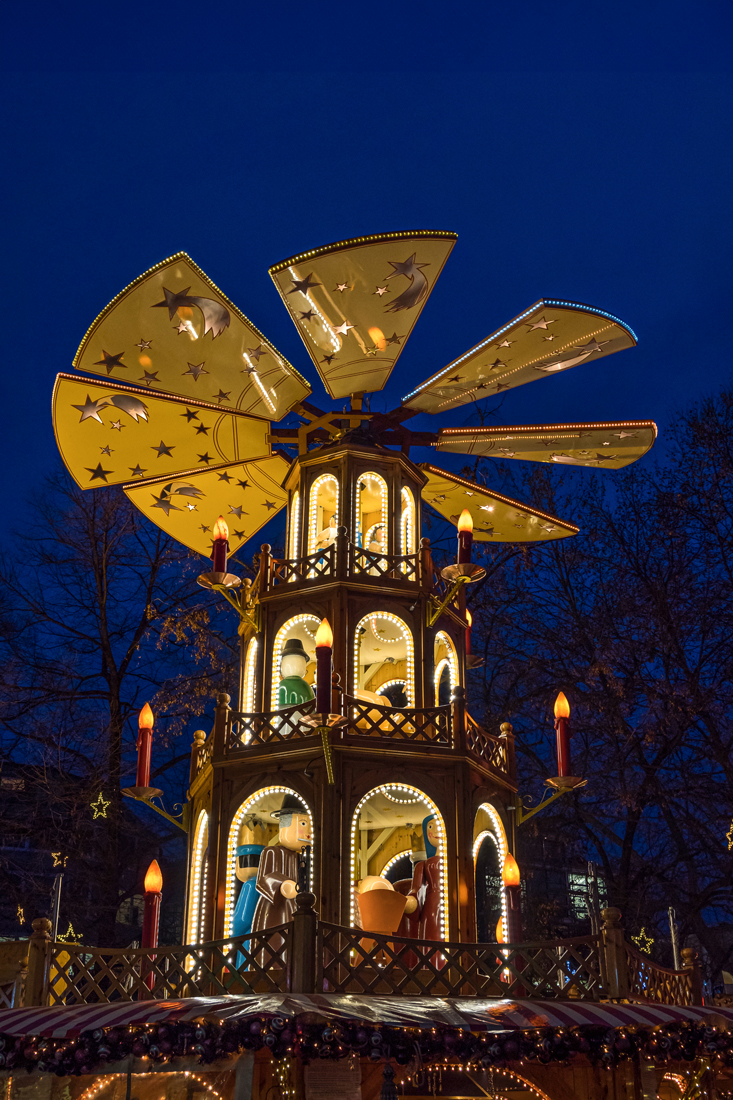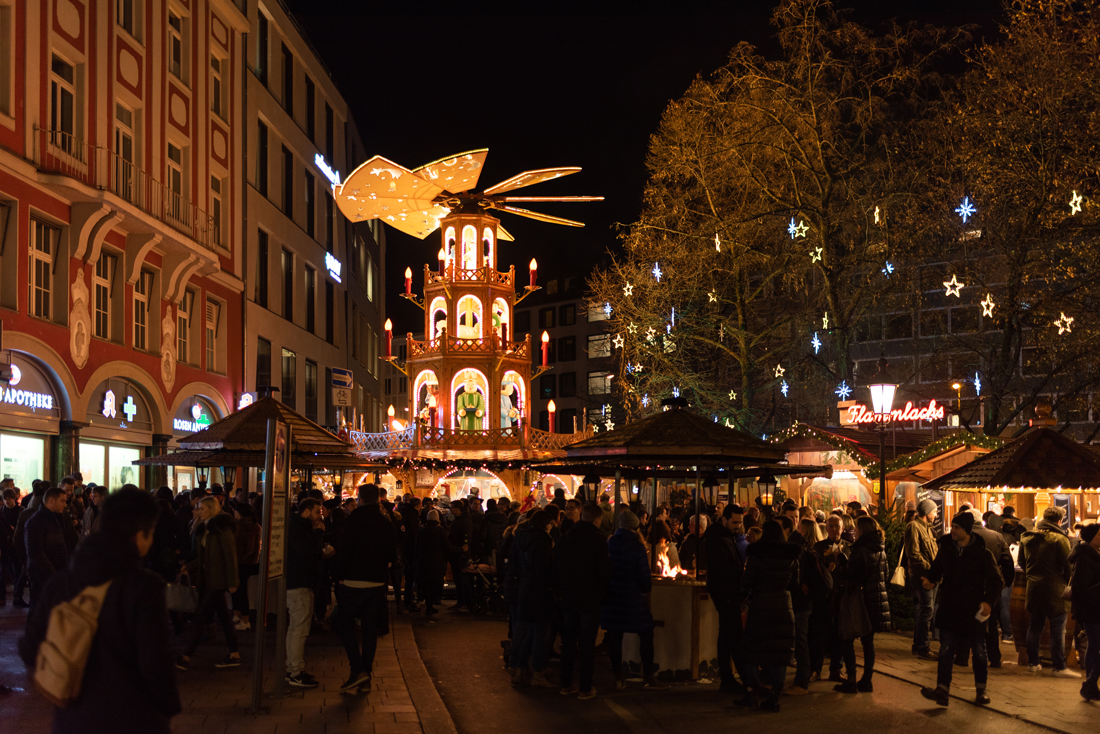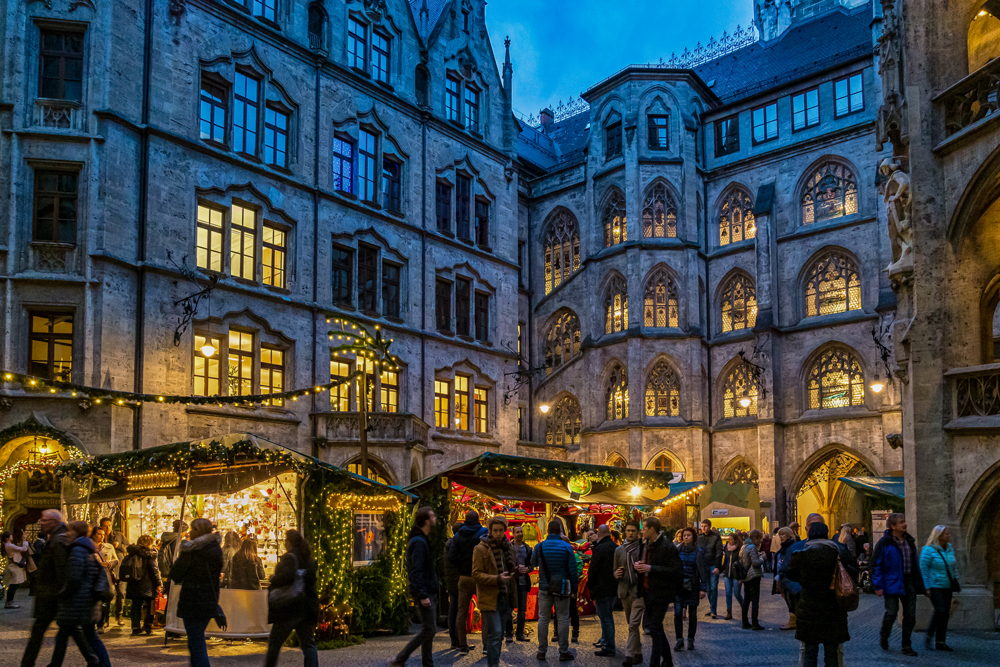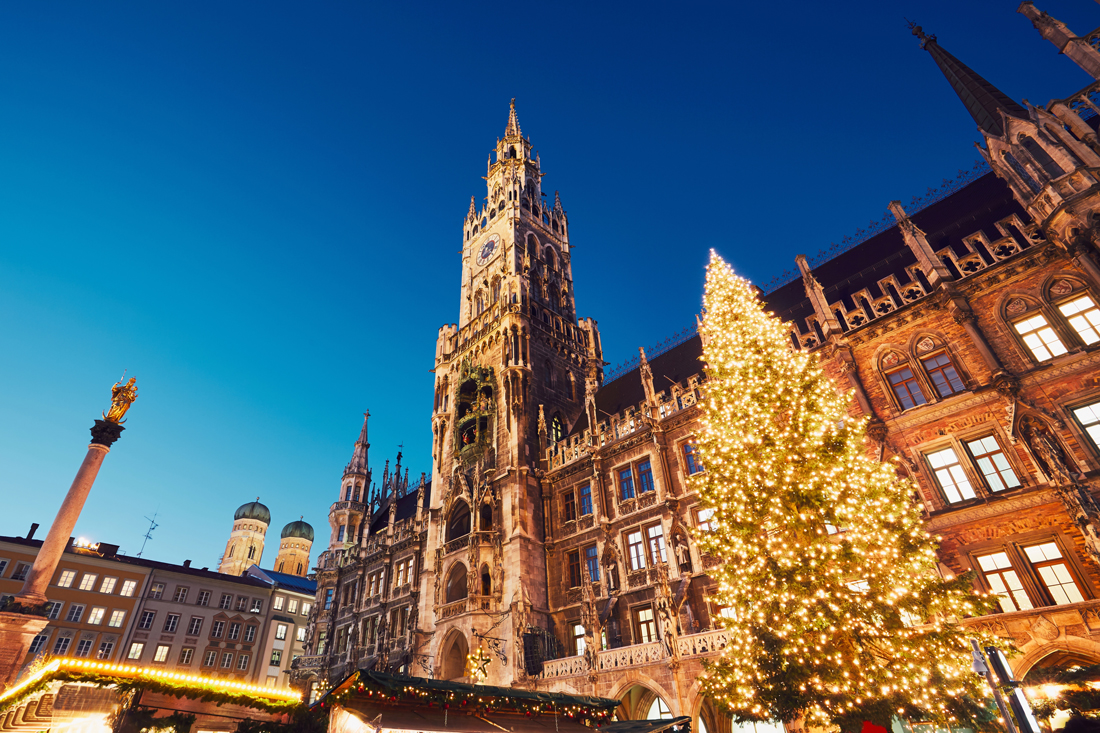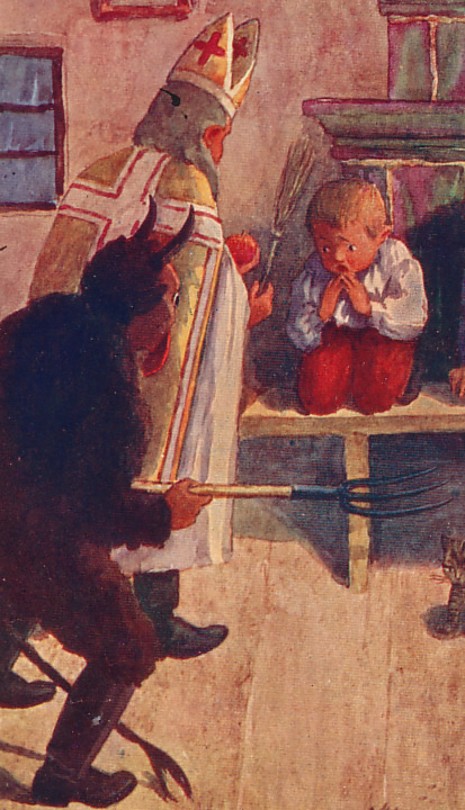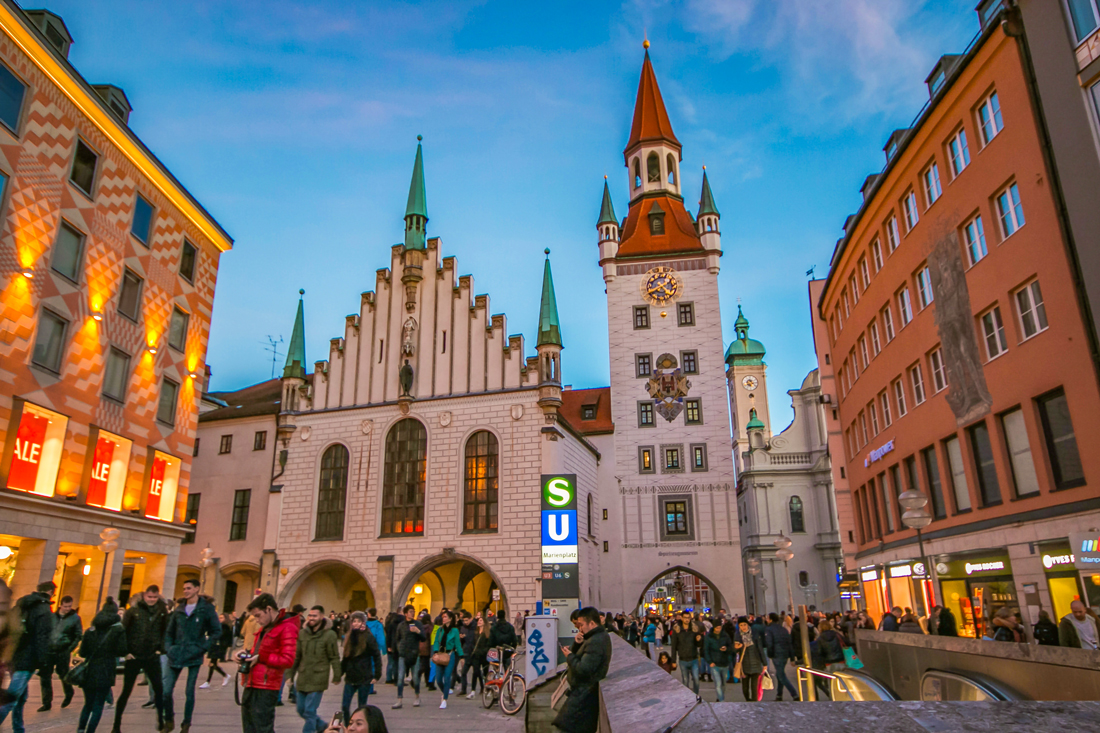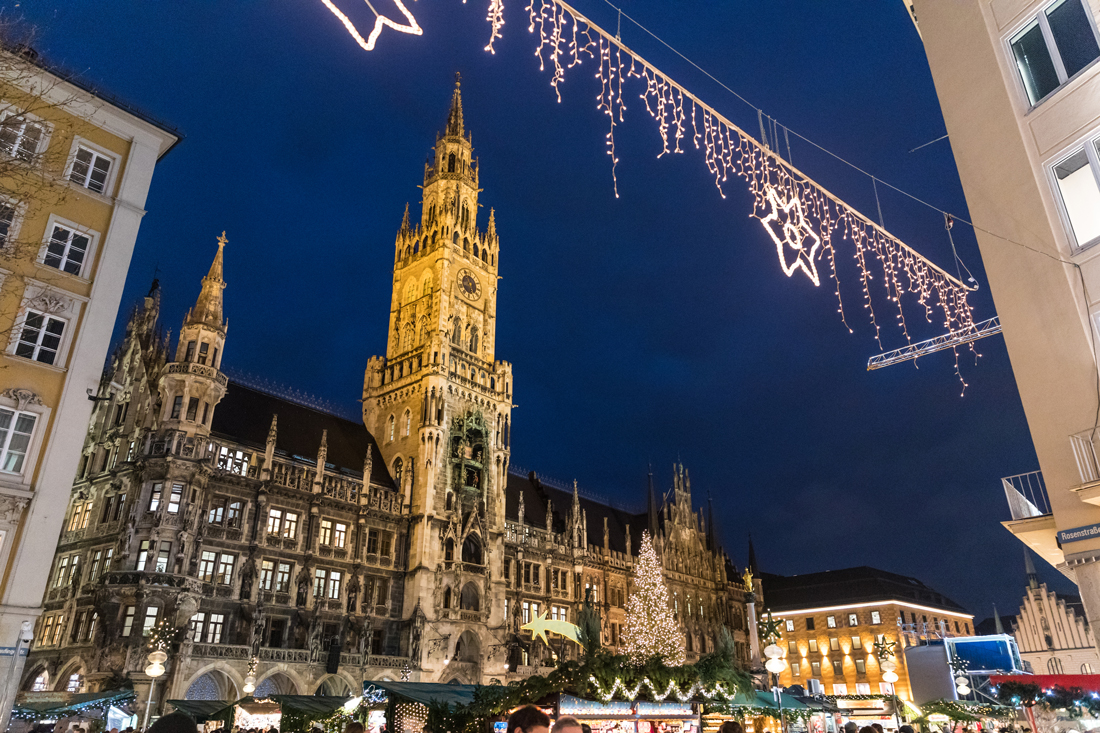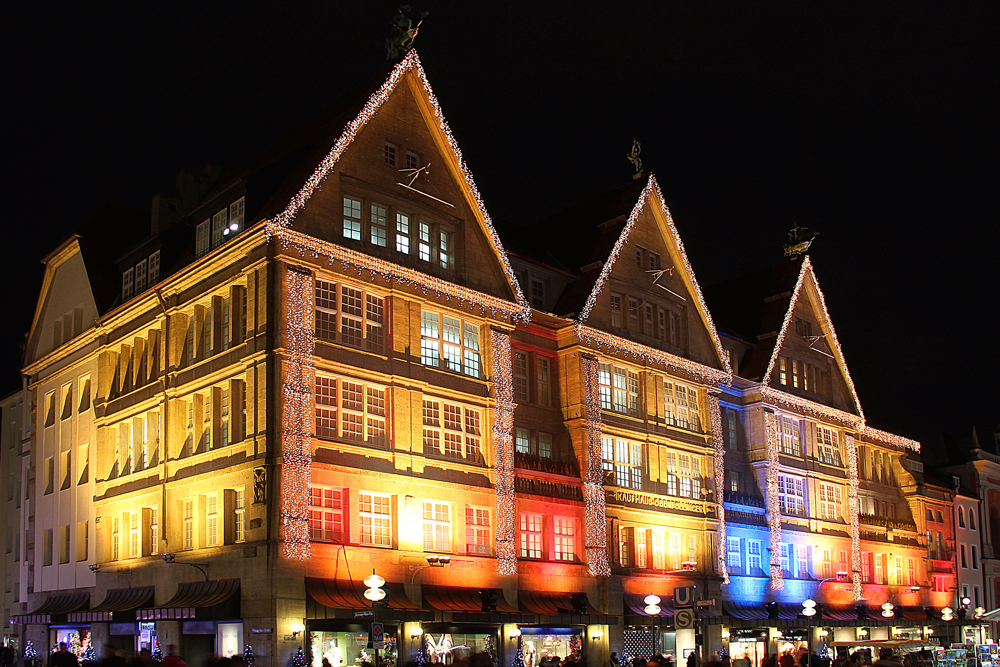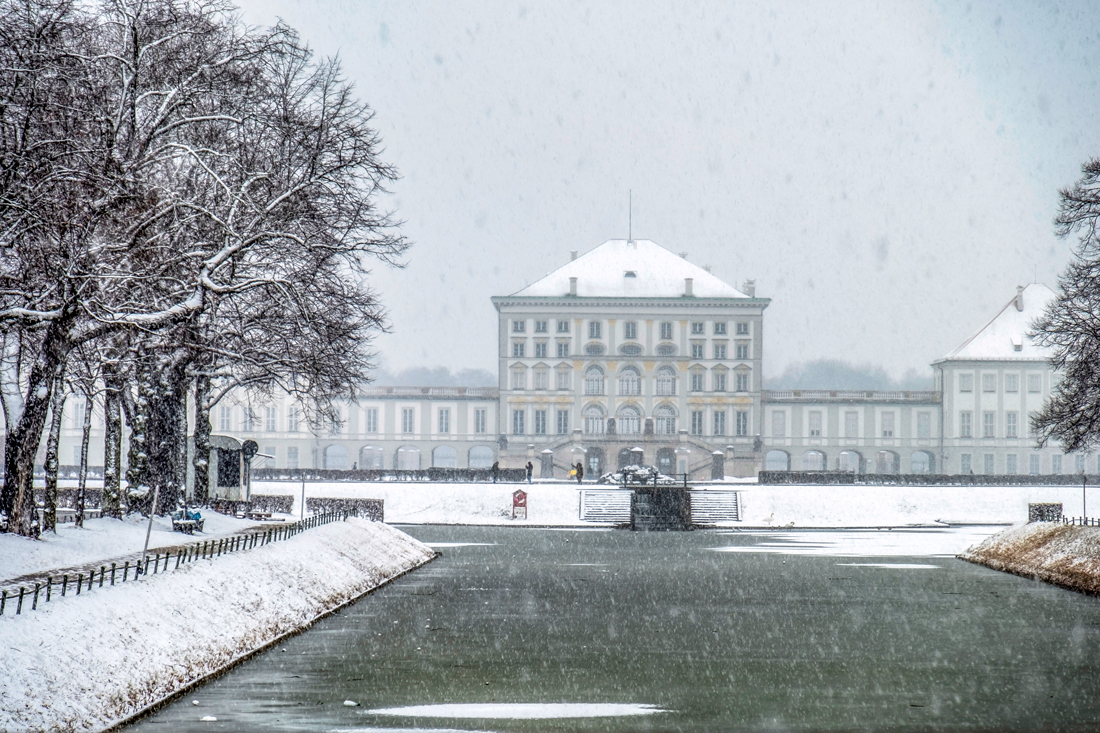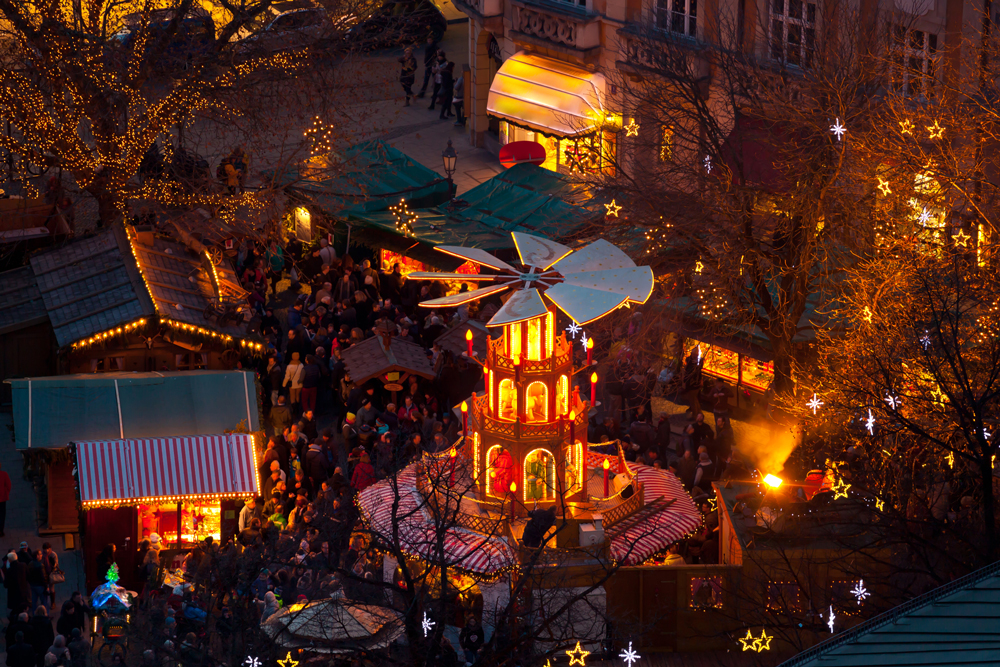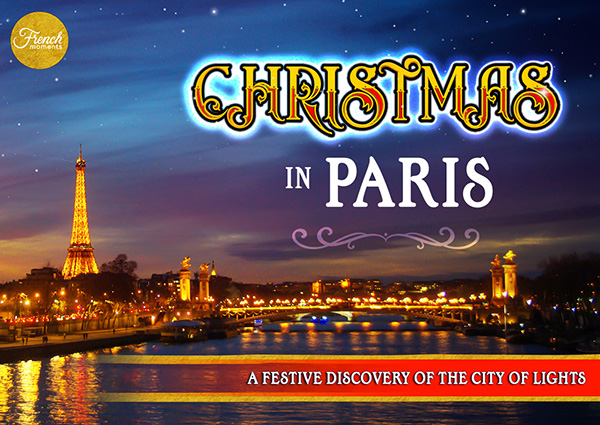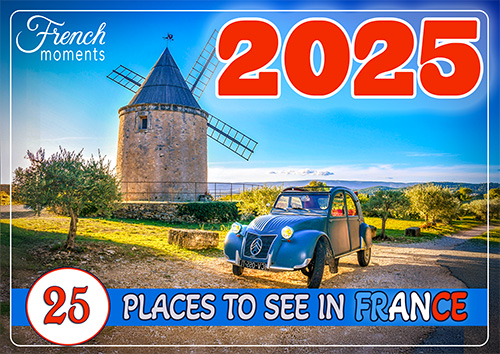When night falls, and the snow-covered roofs of the market stalls glisten beneath the radiant glow of numerous lights, Munich Christmas Market on Marienplatz reveals its most enchanting charm.
The market's signature is the majestic Christmas tree adorned with approximately 2,500 lights, which sparkles against the picturesque backdrop of the neo-Gothic town hall.
The iconic Christkindlmarkt is considered Munich's oldest, representing the essence of the city's holiday spirit.
🎦 Watch our short video on Christmas in Germany, which will inspire you to explore this beautiful country in Europe for the holidays ⤵

About the Munich Christmas Market
The German name for the Munich Christmas Market is Münchner Christkindlmarkt.
With its old-world Bavarian charm, Munich's traditional Christmas market stretches across Marienplatz against the romantic backdrop of the neo-Gothic town hall.
Here, amid the bustling Marienplatz, visitors are treated to a delightful array of seasonal treasures: Lebkuchen and Zwetschgenmanderl, handcrafted wooden goods from regions such as Oberammergau, South Tyrol, and the Erzgebirge (Ore Mountains), alongside an assortment of other yuletide delights that embody the Advent and Christmas traditions.
With over 135 stalls, the market offers an inviting opportunity for a stroll and a taste of the holiday season's culinary pleasures.
As you explore the Christkindlmarkt, indulging in the culinary offerings is essential. Warm mulled wine, punch, and Feuerzangenbowle will envelop you in a comforting embrace while the aroma of freshly roasted almonds and hot chestnuts tantalises your senses from the outside.
A short history of the Munich Christmas Market
From the Nikolaidult to the Christkindlmarkt
The beginnings of the Christkindlmarkt date back to the 14th century with the so-called Nikolaidult or Nikolaus Markets.
The first mention in the city's annals was made in 1642 of a Nikolaidult in Kaufinger Straße near the Schönen Turm - this was only allowed to be supplied by Munich traders.
In the 16th century, under the influence of Protestantism, there was a change in Munich, as in other cities (Nuremberg, Strasbourg), from St. Nicholas to Christkind as the bearer of gifts.
Consequently, the name of the festive market changed from the St. Nicholas market to the Christkindlmarkt (market of the Christ Child).
That said, as in Alsace, St Nicholas has yet to disappear from the Christmas scene in Munich completely. He still appears, notably during the Krampus run.
Several locations for the historic Christkindlmarkt
The Munich Christkindlmarkt has been hosted in various locations throughout the city's history.
For example, at the beginning of the 19th century (1803), the Nikolaidult moved to today's Promenadeplatz. The Munich Christmas market has been situated at its present location in the central square of Marienplatz since 1972.
Facts and Figures
- The Munich Christmas Market is organised by the Department of Labour and Economic Affairs of the City of Munich.
- In 2022, the Munich Christmas Market included 135 stalls and attracted 3 million visitors.
- The Munich Christmas Market around Marienplatz takes place from the 27th of November to the 24th of December 2023.
- For more information about Munich, check out the event's official website.
The Kripperlmarkt
Eleven stalls on Rindermarkt, right next to the Alter Peter, sell nativity scenes and accessories.
This unique market for nativity scene enthusiasts is just a stone's throw from Marienplatz (the site of Munich's traditional Christmas market).
At the Kripperlmarkt, there's a wide choice of nativity scenes to suit all budgets: large Oriental nativity scenes, miniature Alpine nativity scenes, high-quality sculptures from South Tyrol, Oberammergau and the Ore Mountains, as well as inexpensive nativity scenes made of unbreakable plastic.
Some merchants still make their cribs and accessories based on traditional designs often handed down from generation to generation.
You'll find decorative items made from natural materials such as moss and bark and electric cot lighting adapted for the USA. Some stalls also offer repairs, restorations and made-to-measure products.
The Kripperlmarkt was first documented in 1757 and is considered to be the largest of its kind in Germany.
Sternenplatzl and the Christmas pyramid
Sternenplatzl is the name of a small Christmas market on the Rindermarkt.
The centrepiece is a huge 12-metre-high Christmas pyramid. This structure, which originated in the Ore Mountains, houses the revolving wooden figures of the Nativity over several storeys: Mary and Joseph, the infant Jesus, the three kings, the shepherds, the shepherds and the children, the three kings, the shepherds and the angels.
At its base is Siegfried and Sylvia Kaiser's gourmet stand. Here, they sell a full range of sausages and steaks: beef sausages, lamb chop sausages, rump sausages, Nuremberg bratwurst, curry sausages and meat kebabs. There you will find the incredible yet popular half-metre Bratwursts!
Other Christmas markets in Munich
The most authentic Christmas market is the Christkindlmarkt on Marienplatz, but there are other charming and original markets in various districts of Munich:
- Glockenbach and Ludwigsvorstadt
- Neuhausen-Nymphenburg
- Haidhausen and Bogenhausen
- Schwabing
- Olympiapark
- Werksviertel-Mitte
- Schlachthofviertel
- Giesing and Sendling
- Munich and Pasing airport
Click here for more info about opening times and locations.

What to see in Munich at Christmas
Here are some ideas for places to visit during your Christmas break in Munich.
The Christmas tree in Marienplatz
The Christmas tree is the symbol of the Munich Christmas market.
The fir tree is usually delivered and installed around the 8th of November before being decorated in time for the opening of the Christmas market at the end of November.
In 2022, the 25-metre-high fir came from the Weilheim-Schongau district in the Bavarian Alps.
The Christmas tree glows with 3,000 LED candles from dusk (around 4 pm) until 11 pm.
Until Christmas Eve, the tree symbolises the Munich Christmas Market.
After the Christmas market closes on the 24th of December, the tree remains illuminated on Marienplatz until the 6th of January, Epiphany Day.
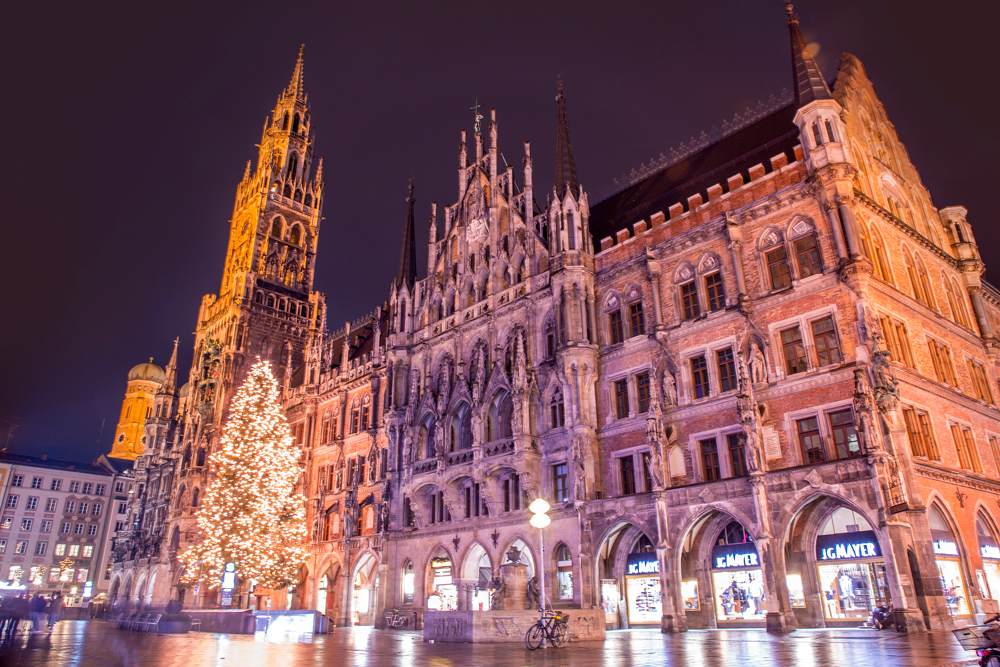
The Christmas tree on Marienplatz after the closure of the Christmas market. Source: Depositphotos.com
The Krampuslauf
The highlight of the Christmas market is the Krampuslauf (Krampus Run), which attracts thousands of visitors to Marienplatz.
The 500-year-old tradition of the Krampus run dates back to the Christian mythological figures of Bishop Nicholas and his evil companion Krampus. Numerous Krampus groups from Bavaria, Austria and South Tyrol participate in the Christmas market.
The parade's itinerary
The parade begins at 3 pm sharp in Sendlinger Straße, with lots of clanging and shouting. Many Munich residents eagerly await the arrival of the scary characters that have been wreaking havoc in the Alpine region for 500 years, such as the Perchten, the Krampus and the Klabaufs.
Interaction with the public is the order of the day, and the Krampus has adapted well to our times by allowing selfies!
From the Sendlinger Straße, more than 300 Krampus make their way towards the Rindermarkt, past the Kripperlmarkt.
The parade reached Marienplatz before entering Kaufingerstrasse on its way to the cathedral. Fortunately, St Nicholas is watching over everyone.
In 2023, the show with the traditional (and thankfully totally harmless) characters takes place on Sunday, the 10th of December, from 3 pm to 5 pm.
See the Munich Christmas market from above
Munich boasts several magnificent viewpoints, with one of the finest undoubtedly being from the Neues Rathaus tower. Thanks to the lift/elevator, you can quickly ascend 85 meters and enjoy breathtaking vistas in every direction:
- Across from you stands the Alter Peter.
- To one side of the tower is the Frauenkirche.
- On the other side, you'll find the Altes Rathaus.
- Towards the north lies the Italian-style Theatinerkirche.
- You can even marvel at the impressive Alps stretching across the southern horizon on clear days.

Munich Christmas Market. Source: Depositphotos.com
The Altstadt and its monuments
Munich, the capital of Bavaria in Germany, is celebrated for its rich cultural heritage and harmonious blend of historical and contemporary architecture.
The city has meticulously reconstructed landmark buildings tragically destroyed during the Second World War, restoring them to their original grandeur.
Additionally, Munich has welcomed new monuments, enriching its architectural landscape with a delightful mix of old and new.
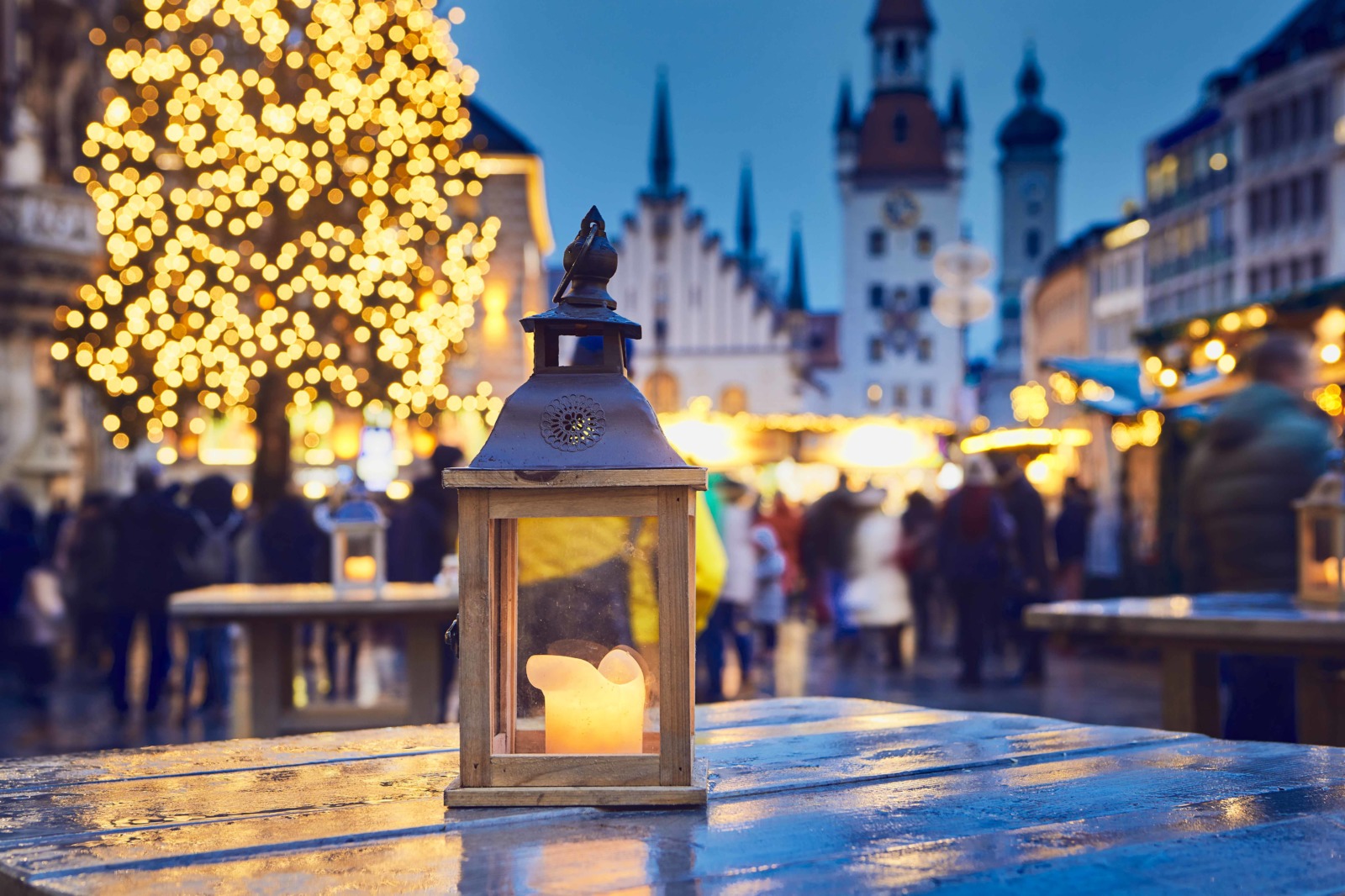
By the Christmas tree. Photo: Chalabala via Envato Elements
One of its most iconic landmarks is the Frauenkirche. The red brick church has two recognisable onion-roofed towers and is Munich's cathedral.
The neighbouring Mikaelskirche is the largest Renaissance church north of the Alps.
Visitors can explore the grandeur of the Nymphenburg Palace, a former royal residence renowned for its stunning Baroque architecture and expansive gardens.
The Residenz, Munich's royal palace, offers a glimpse into the city's royal history, featuring opulent chambers, a treasury, and museums.
Finally, the majestic English Garden, larger than New York's Central Park, invites tourists to unwind in its natural beauty.
What to do in Munich
Here's a list of inspiring activities in Munich:

Munich Christmas Market: What you need to know
Here are some practical info to plan your visit to the Munich Christmas Market.
Where is the Munich Christmas Market located?
The traditional Christmas market of Munich (Christkindlmarkt) occupies the square of Marienplatz and the neighbouring streets in the old town.
In addition, there are several Christmas markets (Weihnachtsmarkt) organised in various districts of Munich (see here).
How to get to the Munich Christmas Market?
🚄 By train:
Accessing Munich by train is convenient and efficient, as Munich boasts excellent rail connections nationally and internationally. The city's primary railway hub is Munich Hauptbahnhof (Munich Central Station), located in the city centre.
Through a comprehensive high-speed rail network, Munich is well-connected to major cities in Germany, such as Berlin, Frankfurt, and Hamburg.
If you're travelling from abroad, Munich can be easily accessed from neighbouring countries like Austria, Switzerland, and Italy, thanks to direct train services.
The EuroCity (EC) and InterCity Express (ICE) trains provide comfortable and fast journeys. The station is a bustling transportation hub, offering various amenities and easy access to the city's public transport system, including the U-Bahn (subway) and buses.
Munich's Hauptbahnhof is located at the gateway to the old town and just a 20-minute walk (1.5 km) from the Christmas market.
✈️ By air:
Munich is easily accessible through the Munich Airport, officially known as Franz Josef Strauss International Airport. Situated approximately 28 kilometres (17 miles) northeast of the city centre, this airport is one of Europe's busiest and most well-connected.
Travellers can access Munich by flying into this modern and efficient airport, which offers domestic and international flights.
Once you arrive at Munich Airport, you have various transportation options to reach the city centre, including suburban trains, airport shuttles, taxis, and rental cars.
The S-Bahn commuter trains S1 and S8 lines are convenient for getting to the city centre, making it a straightforward journey for travellers arriving by air.
🚗 By car:
Munich is a city well-connected through an extensive network of highways and roads. The capital of Bavaria is at the crossroads of several major motorways: the A8, A9, and A92, which connect Munich to other major cities in Germany and neighbouring countries.
If you're coming from the north, the A9 will lead you to Munich, while travelers from the west can take the A8. From the south, the A95 is a convenient route.
Keep in mind that like many European cities, Munich has strict environmental zones, and some areas may require an emissions sticker (Umweltplakette) to enter, so it's essential to check the specific requirements and regulations before your journey.
Munich is :
- 170 km from Nuremberg
- 230 km from Stuttgart
- 310 km from Zurich (Switzerland)
- 390 km from Frankfurt
- 370 km from Strasbourg (France)
- 575 km from Cologne
- 585 km from Berlin
- 840 km from Paris
Where to park your car?
If you're coming to the Munich Christmas Market by car, there are two options:
- Park your car directly in the city centre, in one of the covered car parks. There are around 7,400 parking spaces in around 25 covered car parks in Munich city centre, most of which are open 24 hours a day. However, parking spaces in the city centre within the Altstadtring are quite expensive.
- Park your car free of charge outside the city centre in one of the Park+Ride spaces and take the tram to the city centre. More info on Munich's Park+Ride.
Where to stay in Munich at Christmas?
Immerse yourself in the magical atmosphere of the Munich Christmas market by opting for comfortable and convenient accommodation!
When visiting the Munich Christmas market, selecting suitable accommodation is key to fully enjoying this enchanting season. Fortunately, the city offers a range of lodging options right for every taste and budget.
You can choose from elegant hotels in the heart of the old town, cosy hostels, or charming apartments that provide an authentic home-away-from-home experience.
To streamline your search, you can check out this list of accommodations, featuring a variety of options for your stay.
Remember to look at our interactive map to locate lodgings close to the Christmas market and select the one that best suits your needs.

About the illustrations in the article
Most of the photos are ours (© French Moments). However, I have selected some photos (including the Featured Image of this article) from Depositphotos, a commercial platform that brings authors of high-quality licensed stock photos, graphics, vectors and videos together with appreciative buyers.

